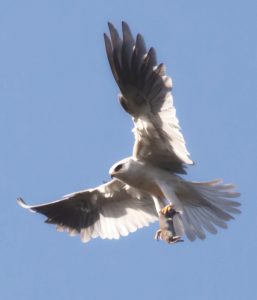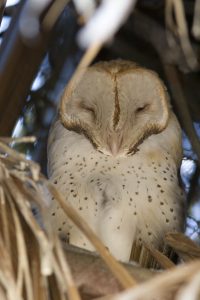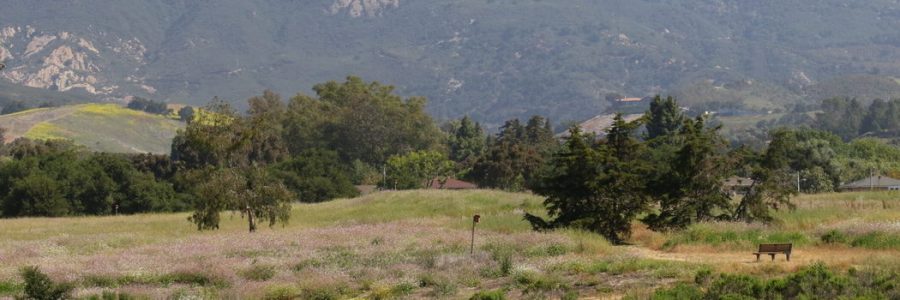“The major problems in the world are the result of the difference between how nature works and the way people think”
~Anthropologist Gregory Bateson~
Anyone who has ever maintained a lawn, garden, or home has experienced ways that our human desires for the perfect landscape can conflict with the patterns and behaviors of the non-human species that inhabit the same space. Perhaps you have wished to have a green lawn free of gopher holes, a vegetable garden without hungry voles nibbling on your plants, or a cellar sans mice droppings. How will you manage these animal pests? In these moments you have a choice: to enact solutions that work with nature or those that work against nature. We hope you will join us in working with nature by choosing natural alternatives to rodenticides. Avoiding the use of rodenticides is good for the birds and other wildlife, as well as our pets and families. This page will introduce the ecological problems caused by rodenticides and offer natural alternatives and resources.
What are rodenticides?
Rodenticides are poisons intended to kill rodents, which include rats, mice, squirrels, voles, chipmunks, and gophers. Rodenticides are typically anticoagulants meaning they work by thinning the blood, preventing clotting. Common brands include d-Con, Hot Shot, Generation, and Tomcat. First generation anticoagulant rodenticides (FGAR) require the creature to consume several doses before becoming lethal, while second generation anticoagulant rodenticides (SGAR) are more lethal, needing only one dose. In either case, it is a slow, painful death, taking one to several weeks for the animal to die. During this time, they may continue consuming the poison, accumulating more than the lethal dose to pass along to the ecosystem. The National Pesticide Information Center points out, “Rodents, humans, dogs and cats are all mammals, so our bodies work in very similar ways. Rodenticides have the same effect when eaten by any mammal. They can also affect birds.”
The (Toxic) Food Web

Photo ©Betsy Mooney
Food webs are the what-eats-what of an ecosystem. Perhaps at times in your life, you have felt a sense of wonderment at the vast interconnectivity of life, whether experienced while out on a hike or while watching a nature documentary from your couch. In our modern lives, many of us lose sight of this basic fact of ecology, but to act with nature we must act in ways that acknowledge the far-ranging impact of our actions on ecosystems. When we introduce poisons into the ecosystem, they move up (and sometimes down) the food web.
Predators who eat poisoned rodents often suffer fatal consequences. The poison passes into the predator’s bloodstream and liver. A recent analysis found that 85% of the surrounding wildlife in California, including hawks and owls, have been killed by rodenticides (citypests.com “Is rat poison legal in California? Guide to legal rodenticides.”) A 2004 paper by the Environmental Protection Agency (EPA) reviewed the available scientific literature to assess the risks to birds and nontarget mammals from rodenticides, including 3 SGARs (brodifacoum, difethialone, bromadiolone) and 3 FGARs (diphacinone, chlorophacinone, warfarin). One of the more deadly SGARs, Brodifacoum, was shown to kill 42% of individuals exposed to prey that had consumed the SGAR. This was found across 11 studies including eight species (barn owls, red-tailed hawks, red-shouldered hawks, American kestrels, Eurasian harriers, laughing gulls, Eurasian buzzards, and Golden eagles), (EPA, 2004).
Predators often find poisoned rodents to be even more enticing than non-poisoned rodents. A 2017 study looked at how poisoned prey influenced the behavior of Ferruginous Hawks, by studying hawks in treated (poisoned) and untreated (not poisoned) colonies of prairie dogs. They found more hawks and more cases of predation in the treated colonies, ruling that the poisoned prairie dogs were easier to capture due to lethargy from poisoning. (Vyas, Kuncir, and Clinton 2017).
Rodenticides also have indirect effects on the health of predators, by affecting cellular function and inhibiting wound healing. For example, animals who are exposed to rodenticides are more susceptible to mange (Fraser et al., 2018). One study found that of the bobcat necropsies conducted during their study, 88% had detectable rodenticides in their livers. Moreover, they found that notoedric mange was positively correlated with exposer to many of these rodenticides (Serieys, et al. 2015).
Natural Approaches to Rodent Control
There are three basic approaches to remember in natural rodent control: Invite predators, introduce deterrents, and avoid attractants. You should employ all three of these approaches whenever possible.
Approach
Actions
Invite Predators
Encourage and protect habitat for raptors in our community. Install an owl box (if appropriate; please refer to Owl Boxes). Ensure yard has suitable perches for hunting.
Introduce Deterrents
Check crawlspaces and vent covers for openings. Make use of light, sound, and scent deterrents.
Avoid Attractants
Cover compost and trash. Clean brush piles. Put cages over susceptible plants.
Invite Predators:
Don’t poison the natural rodent control. Hungry Owl Project, a nonprofit founded in 2001 argues we can nearly eliminate the need for rodenticide through the introduction of owls and other predators. Similarly, Raptors are the Solution (RATS) says raptors and owls are highly efficient predators. A barn owl has been estimated to consume between 1000 and 1500 rodents each year at a far more affordable cost than poisons. Many sites, including Hungry Owl, offer owl boxes for purchase to attract these amazing natural rodent regulators. Many commercial sites offering owl boxes can be found by searching the internet.
https://www.featheredphotography.com/blog/2020/01/06/food-for-thought-and-for-raptors/
Introduce deterrents:
Hungry Owl Project suggests a number deterrents to introduce and attractants to avoid. For example, light, sound, and scent can all be highly effective deterrents. A simple peppermint solution, which can be made at home or purchased, can help deter mice and rats from your home. Rodents generally have a strong sense of smell and find the menthol in peppermint to be irritating to their nasal cavities. Humane exclusion, refers to things you can do to ensure pests cannot get into your home. For example, regularly checking vent covers and crawlspace doors can prevent rodents from entering.
Avoid Attractants:
If given the chance, wildlife will nibble up the fruit and vegetables you work hard to grow. The best things to do is cut off access with fencing. It is also important to clean up debris. Brush piles, tall grass, and compost can all attract wildlife to your garden. Maintaining a tidy garden, covering up compost and trash, and putting cages over particularly susceptible new plants can all help. Hungry Owl Project writes that green lawns tend to attract raccoons and skunks, seeking grubs living in the soil. Reducing your watering can help, as it causes grubs to go deeper underground in search of water, making the lawn less desirable to these species. Non-toxic rat traps, including live, snap, and electric traps are all options to consider.
Rodenticide Laws

Photo ©David Levasheff
While first generation anticoagulant rodenticides (FGARs) are still in wide circulation, most second generation anticoagulant rodenticides (SGARs) were banned for public use in legislature passed in 2014. However, a marked decrease in their prevalence in ecosystems has not yet been observed (CDPR.com). The California Department of Pesticide Regulation say it is too early to judge the bans effectiveness, given that exposure often stays the liver for years. However, others argued that SGARs were not yet properly regulated. While most stores were prohibited from selling them to the general population, licensed pest applicators were given an exemption, and people have been found to use stockpiles or order SGARs illegally from professional pest control websites. In 2020, The Ecosystems Protection Act (AB 1788) was signed into law, which created a moratorium on the use of SGARs until the California Department on Pesticide Regulation reevaluates their safety. While this bill was a major win for the environment, it is still not a total or permanent ban. The bill notably exempts agriculture, factories, breweries, wineries, and use of SGARs for public health reasons. These exemptions make its ban difficult to enforce and its effectiveness limited. It remains to be seen what it will take for the Department of Pesticide Regulation to make their determination about the safety of SGARs. The science is already clear and it is our hope that the reevaluation will lead to a full ban on SGARs.
In Summary
By educating yourself about the ecosystem in which you live, you can begin to work with nature, minimizing harm to the birds, mammals, and other species that roam freely. We recommend visiting the following organizations’ websites for more information and ideas on natural rodent control:
References
Citypests.com “Is rat poison legal in California? Guide to legal rodenticides.”
U.S. EPA, 2004, Potential Risks of Nine Rodenticides to Birds and Nontarget Mammals: a Comparative Approach, EPA-HQ-OPP-2004-0033-0004.
Fraser, D., Mouton, A., Serieys, L.E.K., Cole, S., Carver, S., Vandewoude, S., Lappin, M., Riley, S.P.D., Wayne, R., 2018, Genome-wide expression reveals multiple systemic effects associated with detection of anticoagulant poisons in bobcats (Lynx rufus), Molecular Ecology, 00:1–18, https://doi.org/10.1111/mec.14531
Serieys, L.E.K., Armenta, T.C., Moriarty, J.G., Boydston, E.E., Lyren, L.M., Poppenga, R.H., Crooks, K.R., Wayne, R.K., and Riley, S.P.D., 2015, Anticoagulant rodenticides in urban bobcats: exposure, risk factors and potential effects based on a 16-year study, Ecotoxicology, 24:844–862, DOI 10.1007/s10646-015-1429-5.
The National Pesticide Information Center
Vyas, N.B., Kuncir, F., and C.C. Clinton, 2017, Influence of Poisoned Prey on Foraging Behavior of Ferruginous Hawks, The American Midland Naturalist, 177(1), pp. 75-83.
Hungry Owl Project

